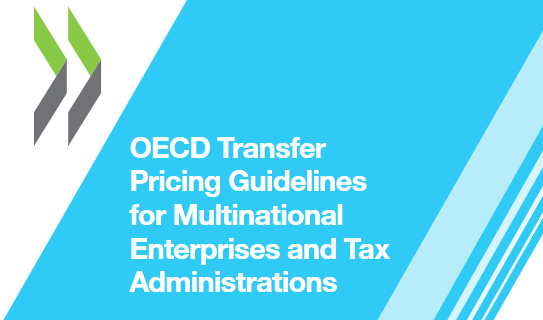The Organisation for Economic Co-operation and Development (OECD) is an international organisation that works for better policies and better lives. The OECD's goal is to promote policies that foster prosperity, equality, opportunity and well-being for all.
The OECD works with governments, policymakers and citizens to create evidence-based international standards and find solutions to a range of social, economic and environmental challenges. From improving economic performance and creating jobs to promoting quality education and combating international tax evasion, the OECD provides a unique forum for exchanging experiences, sharing best practices and advising on policy-making and international standard-setting.
What is the purpose of the OECD Transfer Pricing Guidelines?
In a global economy characterised by multinational companies, States must ensure that the taxable profits of these companies are not artificially shifted to other tax jurisdictions and that the tax base declared by these companies in their tax jurisdiction corresponds to the economic activity carried out there. It is essential for taxpayers that the risks of economic double taxation are limited. The OECD Transfer Pricing Guidelines for Multinational Enterprises and Tax Administrations support the application of the arm's length principle, which represents an international consensus on the valuation of cross-border transactions between associated enterprises.
Applicability of the OECD Transfer Pricing Guidelines
The OECD Transfer Pricing Guidelines are not binding; they are merely guidelines and an attempt to reach an international consensus. To become binding at the national level, the provisions of the OECD Transfer Pricing Guidelines must first be implemented into national law. Many OECD member countries have adopted the principles of the Guidelines in full or very closely in their national legislation.
In Germany, the OECD Transfer Pricing Guidelines were included as an official annex to the Administrative Principles on Transfer Pricing of 6 June 2023 (for the first time in the Administrative Principles on Transfer Pricing of 14 July 2021). As such, they have far-reaching implications for the international interpretation of the arm's length principle. While the Administrative Principles on Transfer Pricing only provide guidance to taxpayers in Germany, they are binding on the German tax authorities.
Summary and overview of the contents of the OECD Transfer Pricing Guidelines of January 2022
The new 2022 edition now also includes the revised guidance on the application of the transaction-based profit method, the guidance for tax administrations on the application of the approach to hard-to-value intangibles agreed in 2018, and the new transfer pricing guidance on financial transactions adopted in 2020. Changes have also been made to the remaining text of the OECD Transfer Pricing Guidelines to improve overall consistency. The original version of the OECD Transfer Pricing Guidelines was adopted by the OECD Council in 1995.
There are 10 chapters to the OECD Transfer Pricing Guidelines:
Chapter I: The arm's length principle
Description of the arm's length principle and the definition of transactions and risk analysis (first introduced in the OECD Transfer Pricing Guidelines in 2017)
Chapter II: Transfer pricing methods
Description of the transfer pricing methods that the taxpayer should select and apply as the most appropriate, taking into account the circumstances of the individual case. This chapter also distinguishes between transaction-based standard methods and transaction-based profit methods.
Chapter III: Comparability analysis
General information on the concept of comparability, conducting comparability analyses, comparability timing issues and compliance and participation issues
Chapter IV: Administrative approaches to avoid and resolve transfer pricing conflicts
Treatment of procedures to ensure compliance with transfer pricing regulations, counter-adjustments and mutual agreement procedures in accordance with Articles 9 and 25 of the OECD Model Tax Convention as well as possible further procedures (e.g. simultaneous tax audits, advance ruling procedures or arbitration proceedings).
Chapter V: Documentation
Description of the objectives of the transfer pricing documentation requirements, the three-tiered approach to transfer pricing documentation (master file, local file and country-by-country report), discussion of compliance and co-operation issues and implementation.
Chapter VI: Special considerations regarding intangible assets
Definition of intangible assets, introduction of DEMPE functions (development, enhancement, maintenance, protection and exploitation) for the discussion of claims to group income from the exploitation of intangible assets and discussion of transfer pricing methods for determining arm's length remuneration in the context of intangible assets.
Chapter VII: Special considerations regarding intra-group services
Presentation of the significance and problems of intra-group services as well as the relevant aspects in determining arm's length transfer prices for the remuneration of services rendered and their differentiation with regard to the value-added contributions of various services.
Chapter VIII: Cost allocation agreements
Definition of cost allocation agreements, discussion of the application of the arm's length principle in relation to cost allocation agreements and recommendations for the design and documentation of cost allocation agreements.
Chapter IX: Transfer pricing aspects of business reorganisations
Description of the scope and theoretical framework for the application of Article 9 of the OECD Model Tax Convention. Explanations on arm's length remuneration for the reorganisation of business activities as such and on remuneration for intra-group transactions following a reorganisation of business activities.
Chapter X: Transfer pricing aspects of financial transactions
Explanation of arm's length remuneration for intercompany financial transactions, including loans, cash pools and financial guarantees, and the treasury function.






